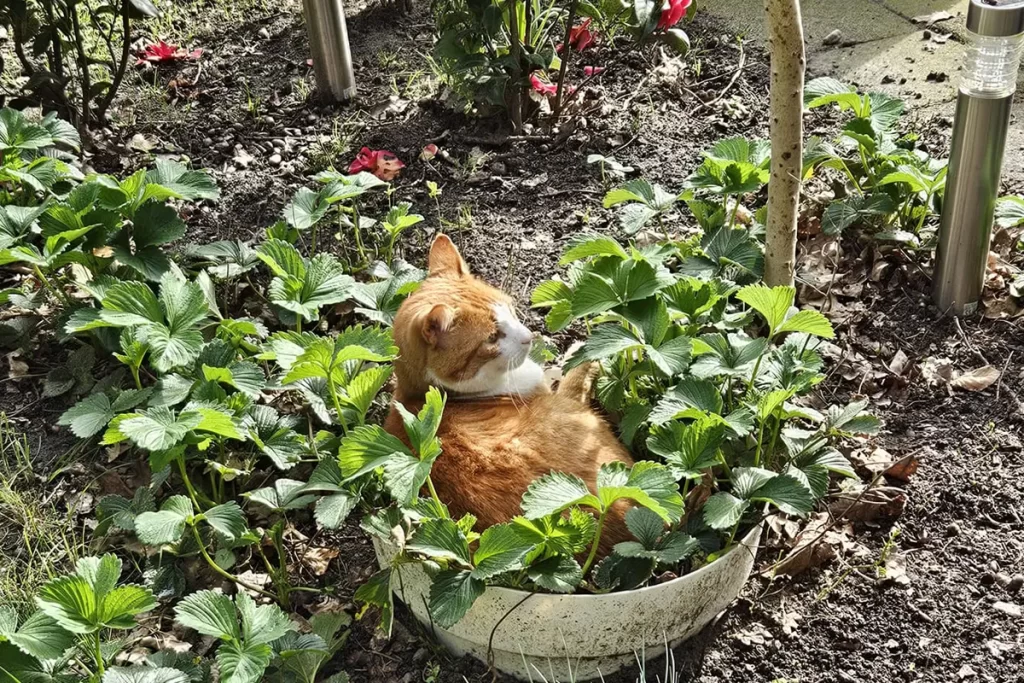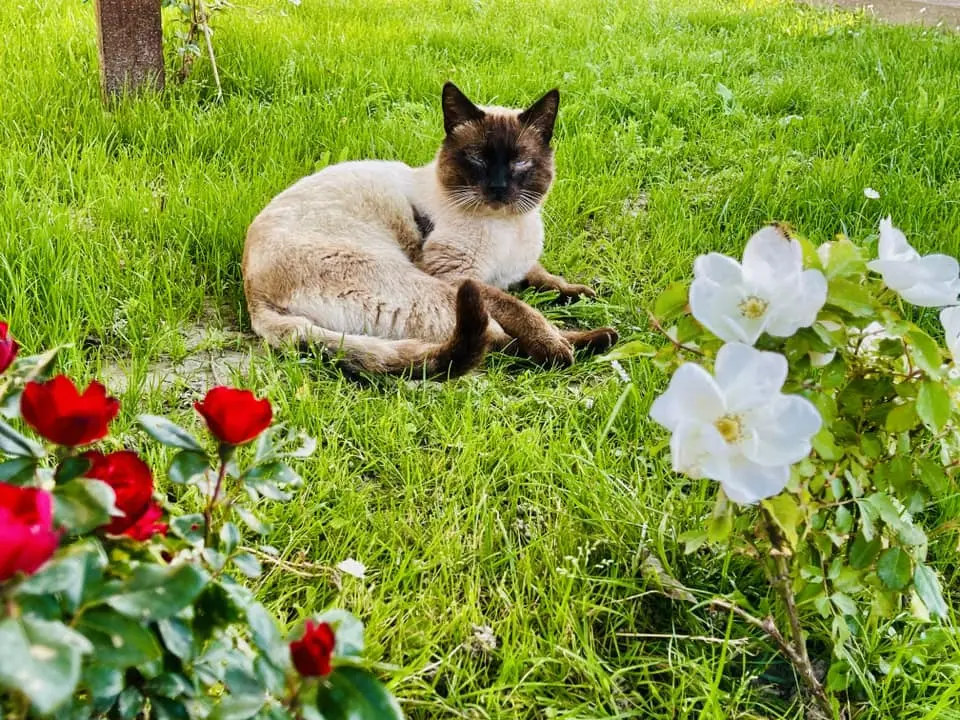Gardening is a wonderful hobby that brings us closer to nature, and many of us enjoy having our cats alongside us in the garden. However, if you’re a cat owner, it’s crucial to understand the potential dangers lurking in your green space. Some plants that may seem harmless or even beneficial to us can be highly toxic to our feline friends. In this article, we’ll help you identify toxic and non-toxic plants for cats, so you can ensure your garden is both beautiful and safe for your furry companion.
Understanding Plant Toxicity and Its Effects on Cats
Cats, being curious creatures, often explore their surroundings with their noses and mouths. This can lead them to chew on plants, especially those that emit intriguing scents or have enticing textures. Unfortunately, not all plants are safe for cats, and consuming the wrong one can lead to severe health complications. Toxic plants can cause a variety of symptoms in cats, ranging from mild gastrointestinal upset to life-threatening organ failure.
The severity of toxicity can vary based on the type of plant, the amount ingested, and the size and health of the cat. Some plants only cause minor discomfort, while others can be deadly even in small quantities. It’s vital to educate ourselves on which plants pose risks and which are safe for our pets.
Common Toxic Plants for Cats in the Garden
Many popular garden plants, although beautiful, are harmful to cats. Here are some of the most dangerous ones to be aware of:
1. Lilies (Lilium species)
Lilies are well-known for being extremely toxic to cats. Even a small ingestion of any part of the plant, including the leaves, flowers, and pollen, can lead to kidney failure. Symptoms of lily poisoning include vomiting, lethargy, and loss of appetite. It is one of the most critical plants to avoid if you have cats.
2. Oleander (Nerium oleander)
Oleander is an ornamental shrub known for its attractive, bright flowers. However, it contains cardiac glycosides, which can affect the heart. If ingested by a cat, it can lead to severe heart issues, including arrhythmia, vomiting, and potentially fatal consequences.
3. Azaleas and Rhododendrons
These beautiful flowering plants are commonly found in gardens, but they are also highly toxic to cats. Ingesting any part of these plants can result in symptoms such as drooling, vomiting, diarrhea, and in severe cases, heart failure.
4. Daffodils (Narcissus)
Daffodils are a springtime favorite, but they can pose a significant risk to cats. The bulbs are particularly dangerous, causing severe gastrointestinal distress, convulsions, and a drop in blood pressure.
5. Sago Palm (Cycas revoluta)
A popular choice for both indoor and outdoor plants, the sago palm is extremely toxic to cats. Ingesting any part of this plant can lead to liver failure, with symptoms such as vomiting, diarrhea, and seizures. Even small amounts can be fatal, making it one of the riskiest plants for cats.
6. Tulips (Tulipa)
Tulip bulbs contain toxins that can cause serious health issues in cats. Ingestion may result in oral irritation, drooling, vomiting, and difficulty breathing. Like daffodils, tulips are most dangerous in their bulb form.
7. Chrysanthemums (Chrysanthemum species)
Chrysanthemums, or mums, are popular for their colorful blooms in fall gardens. However, they contain pyrethrins, which can cause vomiting, diarrhea, hypersalivation, and in some cases, coordination problems in cats.

Non-Toxic Plants for Cats: Safe Choices for Your Garden
Fortunately, there are many plants that are safe for cats, allowing you to create a beautiful garden without worrying about harming your pet. Here are some cat-friendly options:
1. Catnip (Nepeta cataria)
Catnip is a well-known favorite among cats. It’s a safe, non-toxic plant that many cats enjoy sniffing, chewing, and rolling in. Growing catnip in your garden can provide enrichment for your cat while also being completely safe for them to interact with.
2. Spider Plant (Chlorophytum comosum)
The spider plant is a common houseplant that also works well in gardens. It’s non-toxic to cats and even provides a bit of entertainment as cats are often drawn to its long, flowing leaves.
3. Bamboo (Bambusoideae)
True bamboo is another safe option for gardens with cats. It’s non-toxic and offers a lovely aesthetic for your outdoor space. Be cautious, however, as some plants labeled as bamboo, such as “heavenly bamboo,” are actually toxic.
4. Marigolds (Tagetes species)
Marigolds are bright, cheerful flowers that are safe for cats. They’re also great for pest control, making them a functional addition to any garden.
5. Rosemary (Rosmarinus officinalis)
Rosemary is an excellent herb for gardens that is completely safe for cats. It has the added benefit of being aromatic and useful in the kitchen as well!
6. Lavender (Lavandula)
Although lavender oil can be harmful to cats, the plant itself is generally safe when grown in a garden. It’s a lovely, fragrant addition to your yard and can be used in a variety of culinary and decorative ways.
7. Thyme (Thymus vulgaris)
Thyme is another herb that is not only safe for cats but also useful in cooking. It grows well in gardens and offers both a functional and aesthetic purpose.
How to Make Your Garden Safer for Cats
While knowing which plants are toxic or non-toxic is important, there are additional steps you can take to create a safe and enjoyable garden environment for your cat:
1. Create Designated Play Areas
Cats love to explore, so providing a designated area with cat-friendly plants like catnip, wheatgrass, and non-toxic grasses will give them a space to satisfy their natural instincts safely.
2. Use Raised Beds or Barriers
To keep your cat away from potentially harmful plants, you can design raised flower beds or install barriers around certain areas of the garden. This allows you to grow toxic plants while keeping your cat at a safe distance.
3. Remove Dangerous Plants
If you’re unsure whether a plant is safe, it’s best to err on the side of caution and remove it. Regularly inspect your garden for new plant growth or weeds that might be toxic to your cat.
4. Monitor Your Cat’s Behavior
Keep an eye on your cat when they are outside. If they start chewing on something suspicious, it’s better to act quickly and consult your vet if you notice any signs of poisoning.
Conclusion
Creating a beautiful garden that is safe for your cat doesn’t have to be difficult. By avoiding toxic plants and incorporating non-toxic varieties, you can ensure your feline friend enjoys the outdoor space without risk. As always, if your cat shows signs of illness after ingesting any plant, contact your veterinarian immediately.

